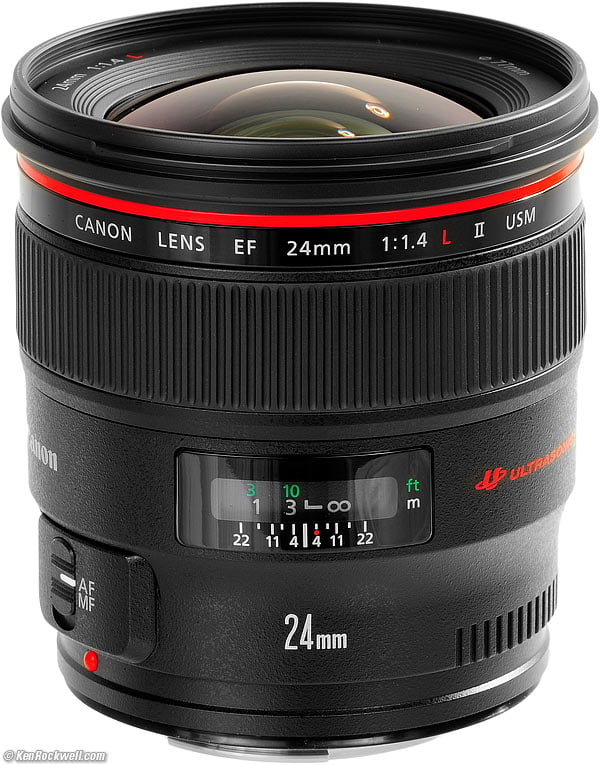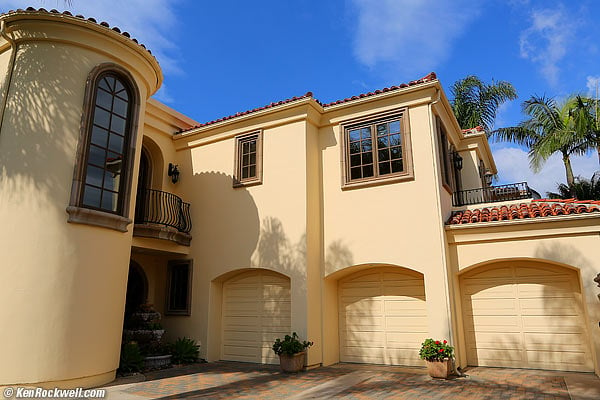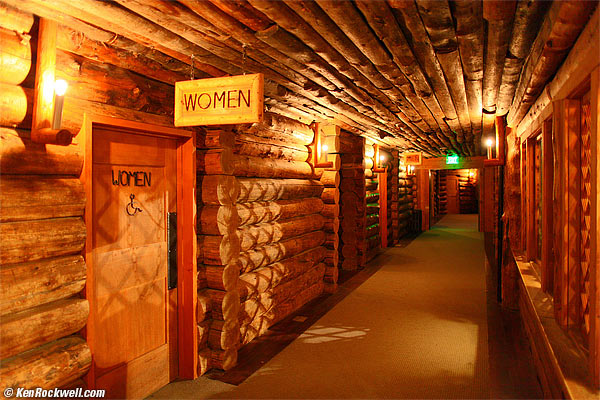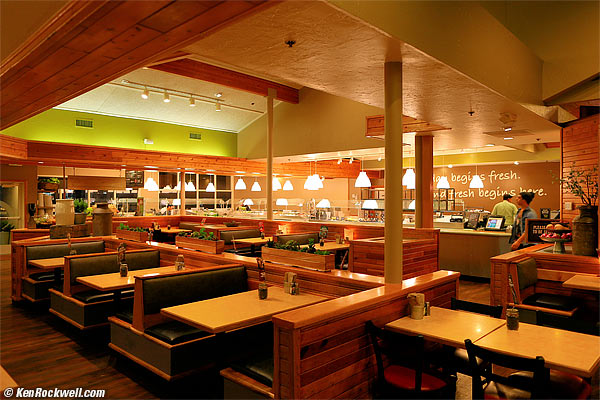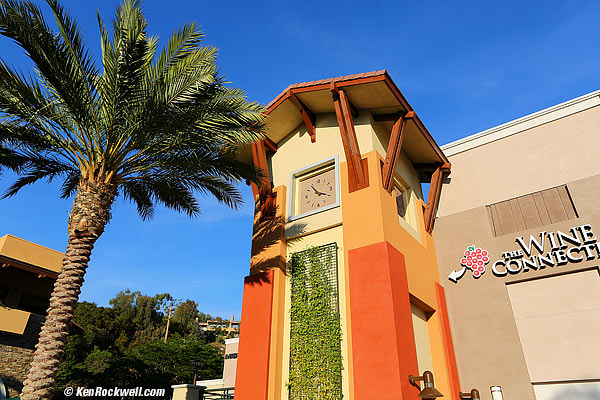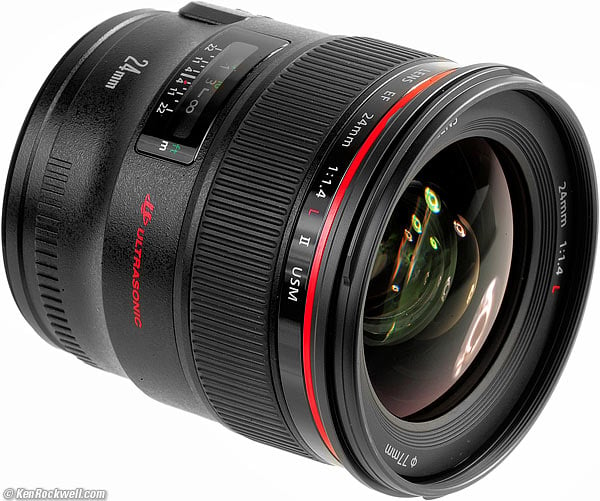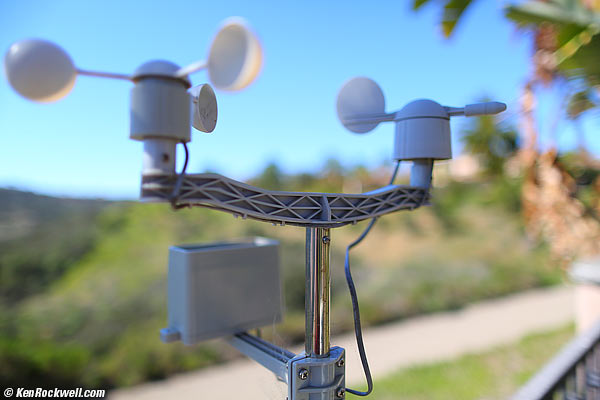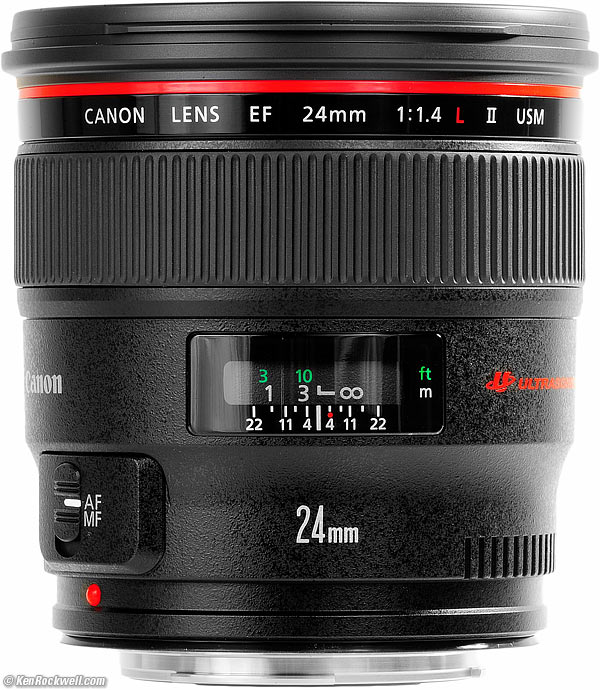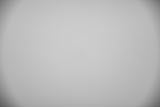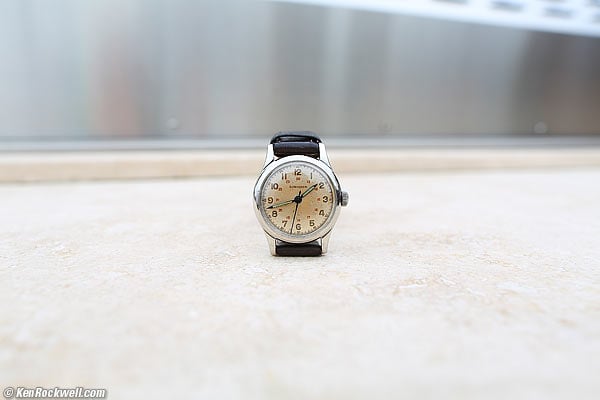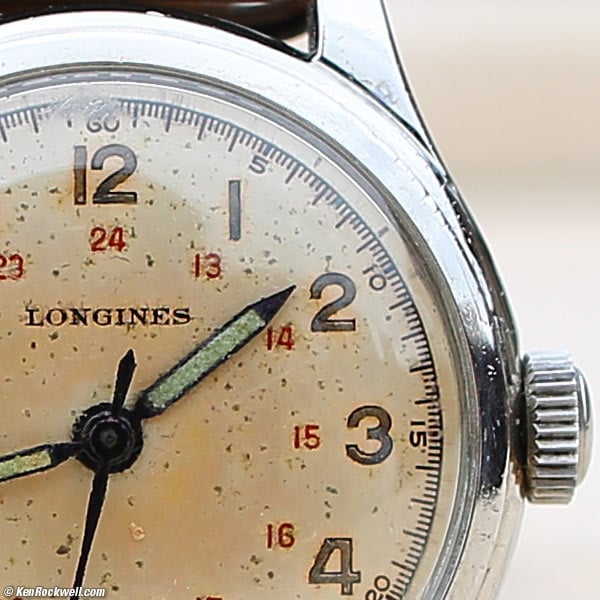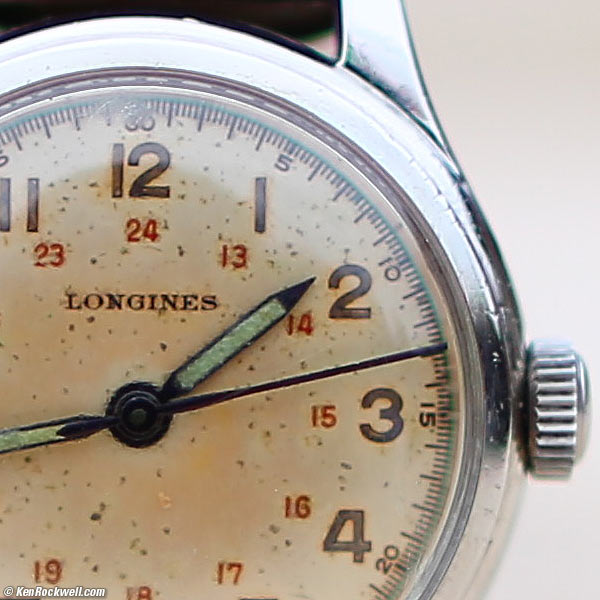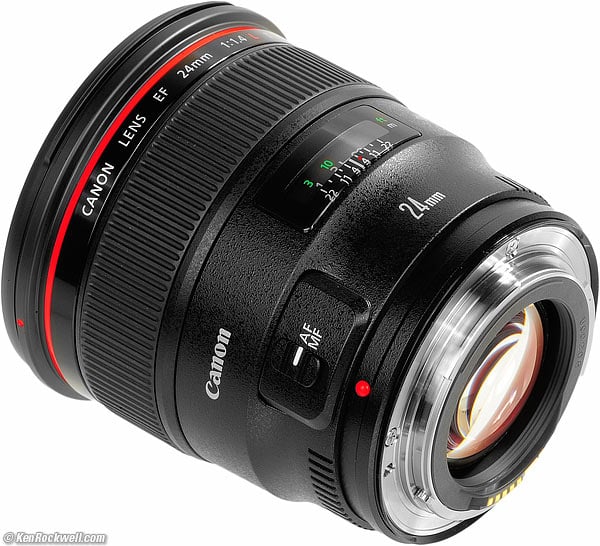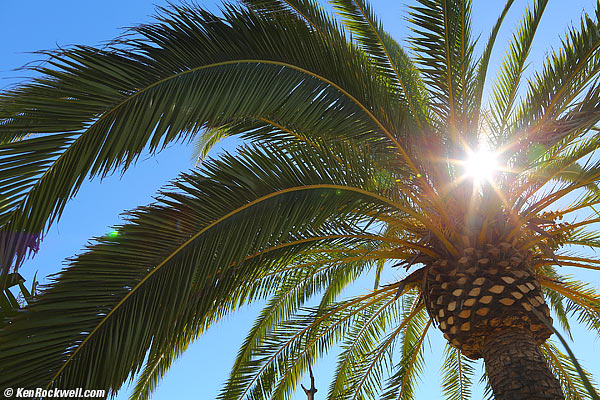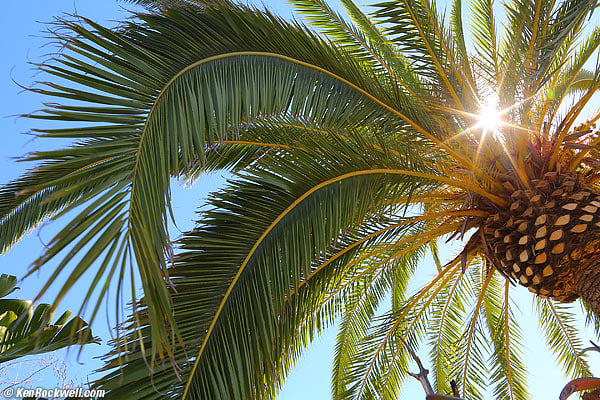Home Donate New Search Gallery Reviews How-To Books Links Workshops About Contact
Canon 24mm f/1.4 L II
EF (2008-)
© 2015 KenRockwell.com. All rights reserved.
Sample Images Intro Specs Performance
Compared Usage Recommendations More
Canon EF 24mm f/1.4 L II (Full-frame, 1.3x and and APS-C coverage, 77mm metal filter thread, 22.8 oz./647g, 10"/0.25m close focus, about $1,649. enlarge.
I got mine at this link to it at Adorama; these links to it at Amazon and at B&H are also great places to get it.
This all-content, junk-free website's biggest source of support is when you use those or any of these links to approved sources when you get anything, regardless of the country in which you live. Canon does not seal its boxes, so never buy at retail or any other source not on my personally approved list since you'll have no way of knowing if you're missing accessories, getting a defective, damaged, returned, store demo or used lens. Buy only from the approved sources I use myself for the best prices, service, return policies and selection. Thanks for helping me help you! Ken.
February 2015 Canon Lenses Canon Reviews All Reviews
Why Fixed Lenses Take Better Pictures
Sample Images (many more in the review) top
Sample Images Intro Specs Performance
Compared Usage Recommendations More
Aviara, 31 January 2015. Canon 5D Mark III, Canon EF 24mm f/1.4 L II, f/10 at 1/400 at ISO 100, Athentech Perfectly Clear v2.) Full Resolution.
Yellowstone, 08 August 2009. Canon 5D Mark II, Auto ISO 1,000, Canon 24mm f/1.4 L II, f/1.4 at 1/20, hand-held. bigger.
Interior, 29 January 2015. Canon 5D Mark III, Canon EF 24mm f/1.4 L II, wide-open f/1.4 at 1/30 at ISO 200, Athentech Perfectly Clear v2.) Full Resolution.
Catch that? Hand-held at ISO 200 indoors at night. That's what f/1.4 does.
Somewhere like Spain, 02 February 2015. Canon 5D Mark III, Canon EF 24mm f/1.4 L II, f/9 at 1/400 at ISO 100, Athentech Perfectly Clear v2.) Full Resolution.
Introduction top
Sample Images Intro Specs Performance
Compared Usage Recommendations More
Along with the 35mm f/1.4 L, this Canon EF 24mm f/1.4 L II USM is one of Canon's two fastest wide angle lenses. This 24/1.4 is Canon's best lens for shooting the Milky Way, as well as for catching close-in action in dim light.
This lens is popular with journalists who need to get closer than the next guy and get their shot, in any light.
This is a specialized lens. In daylight it's no different than the 24mm f/2.8 IS, and the biggest optical difference between this and any 24-xxmm zoom is that this fixed lens has less distortion at 24mm. Stopped down to f/2.8 and smaller it's just as sharp as the other lenses.
This 24/1.4 stands out for its complete lack of visible distortion at most distances. It has far less distortion than LEICA's embarrassing SUMMILUX-M 24mm f/1.4 ASPH, and is sharper and has a flatter field, too!
Just grab the focus ring at any time for instant manual override.
Compatibility
This works on every Canon DSLR and every EOS 35mm camera.
This is a full-frame lens, and also works great on APS-C DSLRs.
Specifications top
Sample Images Intro Specs Performance
Compared Usage Recommendations More
Name
Canon calls this the CANON LENS EF 24mm f/1.4 L II USM.
EF means "electronic focus;" there is an autofocus motor inside the lens.
L means as expensive as L.
USM and ULTRASONIC means that the focus motor operates reasonably silently.
It has an SWC (Sub-Wavelength Coating) on one surface to minimize ghosting.
Optics top

Canon EF 24mm f/1.4L II internal diagram. SWC coating, Glass, Aspheric and UD Glass.
13 elements in 10 groups.
Two elements are aspherical.
Two elements are of UD glass, designed to increase sharpness and eliminate secondary color fringes.
Multicoated, with one surface with a variable-index coating (called SWC, Sub-Wavelength Structure Coating, which is the same as Nikon's Nano-Crystal Coat).
Rear focussing.
Lead-free glass.
Focal Length
24mm.
When used on an APS-C camera, it sees an angle of view similar to what a 38mm lens sees when used on an FX or 35mm camera.
Angles of View, full frame
84º diagonal.
53º vertical.
74º horizontal.
Diaphragm top
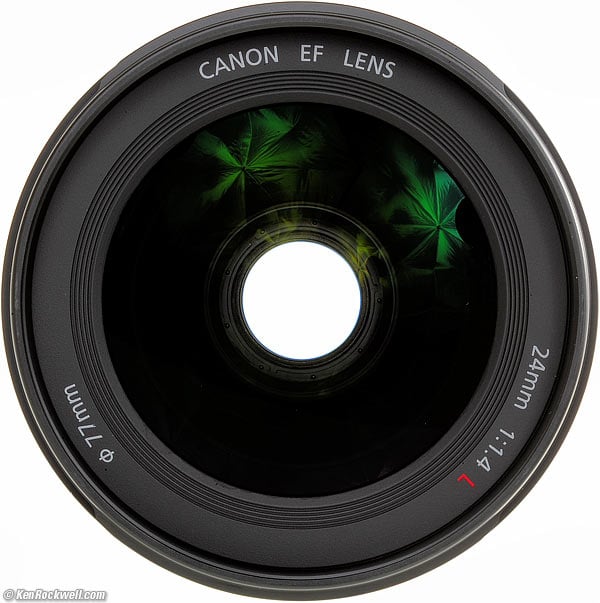
Canon 24mm f/1.4L II at f/1.4. (EF diaphragm not visible).
8 rounded blades; become straight by f/5.6.
Stops down to f/22.
Close Focus top
10 inches (0.25m or 0.82 feet) from the image plane, which is just inches from the front of the lens.
Maximum Reproduction Ratio top
1:5.9 (0.17 x), lens alone.
Close-Up Lenses and Extension Tubes will let you get even bigger than life sized.
Hard Infinity Focus Stop? top
No.
Focus Scale top
Yes.
Depth-of-Field Scale top
Yes.
Infra-Red Focus Index top
Yes.
Filters top
77mm.
Metal threads.
Filter threads never move as focussed.
Close-Up Lenses, Tubes and Converters top
See the Close-Up Lenses and Extension Tubes sections in the Performance section.
Size top
Canon specifies 3.29" (83.5 mm) diameter by 3.42" (86.9 mm) extension from flange.
Weight top
22.818 oz. (646.9g), actual measured.
Canon specifies 22.9 oz. (650g).
Hood top
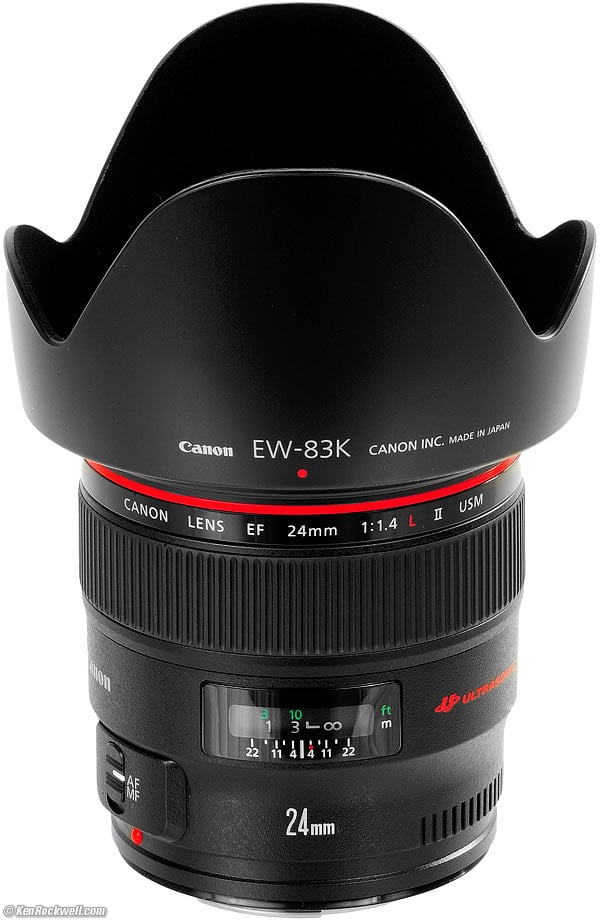
Canon EF 24mm f/1.4 L II with hood attached.
Plastic EW-83K bayonet hood included.
It's $50 for a replacement.
Caps top
New 77mm Canon pinch-type front cap II and standard EOS rear cap, included
Case top
Canon includes an LP1319 sack.
It also fits the 16-35mm f/2.8L USM, 17-40mm f/4L USM and 10-22mm f/3.5-4.5 EF-S.
Announced top
17 September 2008.
Promised for top
December 2008 per the press release, October 2008 per Canon USA's page on the 24mm II back in 2008.
Canon Model Number top
EF2414L2.
Canon Item Code top
2750B002. (2750B001 in Japan.)
JAN Code top
4960999-575063.
Included top
Lens.
EW-83K bayonet hood.
Caps.
Price, USA top
2015 February: $1,649.
At 2008 introduction: $1,699.
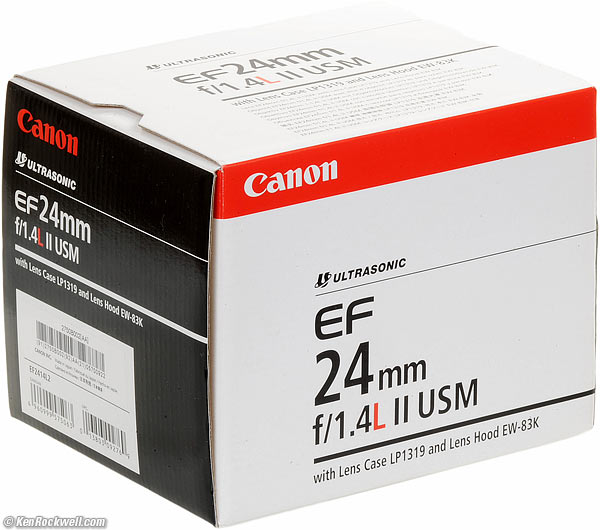
Box, Canon 24/1.4 II.
Performance top
Sample Images Intro Specs Performance
Compared Usage Recommendations More
Overall Focus Bokeh Close-Up Lenses Coma
Distortion Ergonomics Extension Tubes Falloff
Filters Flare & Ghosts Focus Breathing Color Fringes
Macro Mechanics Sharpness Spherochromatism Sunstars
Overall performance top
Canon EF 24mm f/1.4 L II. enlarge.
The Canon 24mm f/1.4 L II is a very good ultraspeed wide lens. It's sharp and clear — but still not perfect — at f/1.4.
I'm a tough grader; this lens is much better optically than the $7,300 LEICA SUMMILUX-M 24mm f/1.4 ASPH!
Focus performance top
Autofocus
Autofocus is fast enough for normal use, but not instantaneous. It takes a moment to rack in and out if it has to; it needs the precision to get perfect focus at f/1.4. It's about as fast as the 24-70/2.8 L II at 24mm, no big deal.
If it's dark, it sometimes will not lock-on and fire as quickly as I might like, or might not lock at all and prevent my 5D Mk III from firing. If your application is shooting action in the dark, be sure it does what you need. No worries, get yours from any of Adorama, Amazon or B&H as you should and you can get a cash refund if it doesn't work as well as you'd like.
Autofocus Accuracy
Autofocus is always dead-on.
Auto/Manual Switching
Just grab the ring anytime for instant manual-focus override.
Manual Focus
It takes a 135º turn from ∞ to the closest distance.
Manual focus is fine.
Bokeh performance top
Bokeh, the quality of out-of-focus areas as opposed to the degree of defocus, is mediocre.
Backgrounds get soft enough at f/1.4, but they are always a bit busy. Out of focus points of light tend to have sharper edges.
Ryan likes the fish at Leucadia Pizzeria, 04 February 2015. (Canon 5D Mk III, Canon 24mm f/1.4 L II, f/1.4 at 1/125 at ISO 4,000, Perfectly Clear V2.) bigger.
f/1.4 lets us shoot in a dark restaurant at 1/125 and stop my kids as the move. Note the background is a bit rough.
Here's another full-frame sample. Click for the camera-original JPG:
At f/1.4 on full-frame. Camera-original © file.
Close-Up Lenses performance top
Canon makes a very high quality dual-element close-up lens, the 77mm Canon 500D, which screws on the front.
It lets you get magnifications from 1:20 to 1:5 (0.05x to 0.21x).
It lets you do this with no loss of light as you get with Extension Tubes.
Canon suggests not using autofocus with the close-up lens.
Coma performance top
There is a bit of coma at f/1.4, which can lead to tiny batwings on bright points of light in the corners on full frame.
It goes away by f/2.8 to f/4.
Distortion performance top
There is no visible distortion at 10 feet (3 meters) and beyond, and barrel distortion at 3' (1 meter) and closer.
There is just a tiny bit of waviness left after these corrections, but I wouldn't worry about it; as 24mm lenses go, this is superb.
These values in Photoshop's Lens Distortion tool remove most of it:
30' (10m) |
0.0 |
10' (3m) |
+0.7 |
3' (1m) |
+2.2 |
1' (0.3m) |
+2.5 |
© 2015 KenRockwell.com. All rights reserved.
Ergonomics performance top
Canon EF 24mm f/1.4 L II ULTRASONIC. bigger.
Ergonomics are great for normal use. Focus and everything is great.
Manual focus moves with just a fingertip.
For macro use, I find manual focus a little bit too fast, making it more difficult to set precise focus than I would prefer.
Extension Tubes performance top
Canon suggests not using autofocus with extension tubes.
Canon EF-12 (12mm long)
The Canon EF-12 or Canon EF12 II shifts your focus range to 156 to 167 millimeters, for a magnification range from 1:2 to 1:1.5 (0.50x ~ 0.67x).
Canon EF-25 (25mm long)
The Canon EF-25 or Canon EF25 II won't work; you'd be focussed so close that the subject would be inside your lens.
Falloff (darkened corners) performance top
Falloff is strong at f/1.4 without correction, minor at f/2 and gone by f/2.8.
With in-camera correction, it's invisible even wide-open.
I've greatly exaggerated this by presenting it against a gray background. In actual photography, it's much less apparent.
Canon 24mm f/1.4 L II falloff No peripheral illumination correction
© 2015 KenRockwell.com. All rights reserved.
With a profile and in-camera peripheral illumination correction
© 2015 KenRockwell.com. All rights reserved.
|
Filters, Use with performance top
There's no problem with vignetting, even using two ordinary 77mm filters.
Canon says use only one filter, while I have no problem with two.
Avoid polarizers with all wide angle lens because they usually render the sky with dark bands.
Flare and Ghosts performance top
I shot it straight into the sun as seen under Sunstars, and had no problems.
This below is the very worse I could get — and this is with a Hoya HMC SUPER UV filter. Shift the camera a little bit, and this ghost goes away.
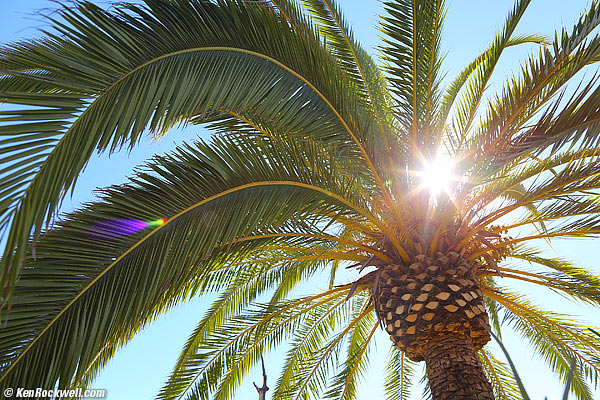
Ghost at f/7.1.
Focus Breathing performance top
Focus breathing (the image changing size as focused) is mostly of interest to cinematographers who don't want the image changing size ("breathing") as the lens is focused among different subjects.
The image from the 24 1.4 II gets slightly larger as focussed more closely.
Lateral Color Fringes performance top
There are no lateral color fringes with a lens profile on full frame.
This is superb, and as expected for such a lens.
Macro performance top
It focuses close, but because it's so wide, doesn't seem that way.
Longines 23ZS at close-focus distance. f/5.6 at 1/160 at ISO 100, Canon 5D Mk III.
Crop from above at 100%. If this is about 6" (15cm) on your screen, printing the complete image at this same high magnification would result in a 40 x 60" (100 x 150 cm) print!
Same thing, shot at f/1.4. If this is about 6" (15cm) on your screen, printing the complete image at this same high magnification would result in a 40 x 60" (100 x 150 cm) print!
What looks like noise is the precise surface texture of the watch.
It's softer at f/1.4, but give it a break; it's not designed as a macro lens.
It's super sharp at reasonable apertures at macro distances.
Mechanics performance top
Rear, Canon 24mm f/1.4 L II, showing UC0208 date code. enlarge.
The Canon 24mm f/1.4 L is a reasonably well made lens, with plenty of metal.
Hood
Plastic bayonet.
Hood Mount
Anodized aluminum.
Filter Threads
Anodized aluminum.
Identity
Printed on metal ring on outside front of lens
and
Printed on plastic ring inside filter threads.
Focus Ring
Rubber covered metal.
Barrel
Plastic.
Internals
Seems like plenty of metal.
Mount
Metal.
Markings
Painted.
Serial Number
Engraved into a valley in the lens mount flange mating surface and filled with black paint.
Date Code
Printed on rear light baffle as shown above.
Mine has date code UC0208, meaning my sample was made in Canon's Utsunomiya plant in February 2014.
Rear Gasket (moisture seal at mount)
Yes.
Noises When Shaken
Moderate clattering.
Quality
Made in Japan.
Sharpness performance top
Image sharpness depends more on you than your lens, and lens sharpness doesn't mean much to good photographers. It's the least skilled hobbyists who waste the most time blaming fuzzy pictures on their lenses, while real shooters know that few photos ever use all the sharpness of which their lenses are capable due to subject motion and the fact that real subjects are rarely perfectly flat.
This lens is so good that only if you have a dedicated optical test range will you find anything amiss. What I see below requires special situations, and looking at prints many, many feet wide. As you can see at the top, images are wonderful even at f/1.4 — the challenge is having a subject flat enough to be in focus all over the frame.
At f/1.4, it's sharp and contrasty over most of the image, but softer in the corners due to coma.
At f/2, it's about the same as at f/1.4, just with less apparent light falloff in the corners.
At f/2.8 and f/4 the corners are getting even better.
At f/5.6 the corners are now excellent.
f/8 is optimum, everything is super sharp everywhere on full frame. As with most lenses, f/8 is optimum.
At f/11 everything is slightly softer due to diffraction.
At f/16 it's softer due to diffraction.
At f/22 it's even softer due to diffraction.
Here's Canon's MTF curve, which shows that it's sharpness is reasonable:

Canon EF 24mm f/1.4 L MTF Curve.
Spherochromatism performance top
Spherochromatism, sometimes called "color bokeh" by laymen, is a minor aberration which can add slight color fringes to out-of focus highlights.
I'm impressed; there is no spherochromatism.
Sunstars performance top
With its 8-bladed diaphragm, this Canon 24mm f/1.4 makes the usual 8-pointed sunstars on brilliant points of light at normal apertures, but little at the largest apertures due to the rounded blades.
Canon 24mm f/1.4 L II sunstar at f/8. bigger.
Canon 24mm f/1.4 L II sunstar at f/18. bigger.
Compared top
Sample Images Intro Specs Performance
Compared Usage Recommendations More
Versus the old Canon 24mm /1.4 L (1997-2008)
The first EF 24mm f/1.4L was smaller, lighter and not quite as sharp at large apertures.
This new II version also adds a SWC (Sub-Wavelength Structure Coating), which reduces ghosts.
Versus the Canon 24mm /2.8 IS
The 24mm f/2.8 IS is all plastic except for the a metal mount. It is much smaller, lighter and less expensive.
They are both equally sharp at the same apertures.
The 24/1.4 L II makes sunstars, the 24/28 IS doesn't make sunstars.
The 24mm f/2.8 IS is a much smarter choice for nature and landscape shots, while the 24mm f/1.4 L comes into its own if you're actually going to shoot at f/2 or f/1.4, which you'd do if doing astronomy or shooting action in low light.
If your subjects hold still, the 24mm f/2.8 IS is a smarter choice.
Versus the Canon 24-70/2.8 L II
The 24-70/2.8 L II is a huge, heavy and even more expensive lens. Optically it has far more distortion at 24mm, and it's only as fast as the IS lens — but has no IS.
I use the 24-70 because it zooms; I don't use a fixed 24mm lens. If you want a 24mm lens, pass on the huge 24-70, while for me, the 24-70 replaces several lenses.
Usage top
Sample Images Intro Specs Performance
Compared Usage Recommendations More
AF — MF
Use AF for normal shots.
In AF, it autofocuses, and you can grab the focus ring at any time for instant manual focus override.
M is manual focus only and locks-out autofocus.
In manual, just look at the ground glass and focus snaps-in much faster than diddling around with moving AF points around.
Recommendations top
Sample Images Intro Specs Performance
Compared Usage Recommendations More
This is a special-purpose lens for journalists shooting action in low light, as well as for astrophotographers. As soon as you stop down to f/2.8, you've lost all the benefits of this lens, but still have to pay for it and carry the weight.
For normal nature and landscape use, the 24mm f/2.8 IS is a much better choice.
For photographing people close-up in dim light, this f/1.4 lens is fantastic. The newsman who gets the closest is the one who sells his shot, so a 24mm f/1.4 is one way pro newsmen win against others in dim light.
Personally, I prefer a zoom since I'm not that excited by 24mm lenses, but for news and action close-up, the 24/1.4 is unbeaten. See also How to Use Wide Lenses.
I got mine at this link to it at Adorama; these links to it at Amazon and at B&H are also great places to get it.
This all-content, junk-free website's biggest source of support is when you use those or any of these links to approved sources when you get anything, regardless of the country in which you live. Canon does not seal its boxes, so never buy at retail or any other source not on my personally approved list since you'll have no way of knowing if you're missing accessories, getting a defective, damaged, returned, store demo or used lens. (My approved sources ship from automated warehouses where no salespeople or lookie-loos can get their greasy fingers on your new lens.) Buy only from the approved sources I use myself for the best prices, service, return policies and selection.
Thanks for helping me help you!
Ken.
More Information top
Sample Images Intro Specs Performance
Compared Usage Recommendations More
Canon 24/1.4 II instruction manual.
Canon USA's page on the 24mm f/1.4.
Help me help you top
I support my growing family through this website, as crazy as it might seem.
The biggest help is when you use any of these links when you get anything, regardless of the country in which you live. It costs you nothing, and is this site's, and thus my family's, biggest source of support. These places have the best prices and service, which is why I've used them since before this website existed. I recommend them all personally.
If you find this page as helpful as a book you might have had to buy or a workshop you may have had to take, feel free to help me continue helping everyone.
If you've gotten your gear through one of my links or helped otherwise, you're family. It's great people like you who allow me to keep adding to this site full-time. Thanks!
If you haven't helped yet, please do, and consider helping me with a gift of $5.00.
As this page is copyrighted and formally registered, it is unlawful to make copies, especially in the form of printouts for personal use. If you wish to make a printout for personal use, you are granted one-time permission only if you PayPal me $5.00 per printout or part thereof. Thank you!
Thanks for reading!
Mr. & Mrs. Ken Rockwell, Ryan and Katie.
Home Donate New Search Gallery Reviews How-To Books Links Workshops About Contact

